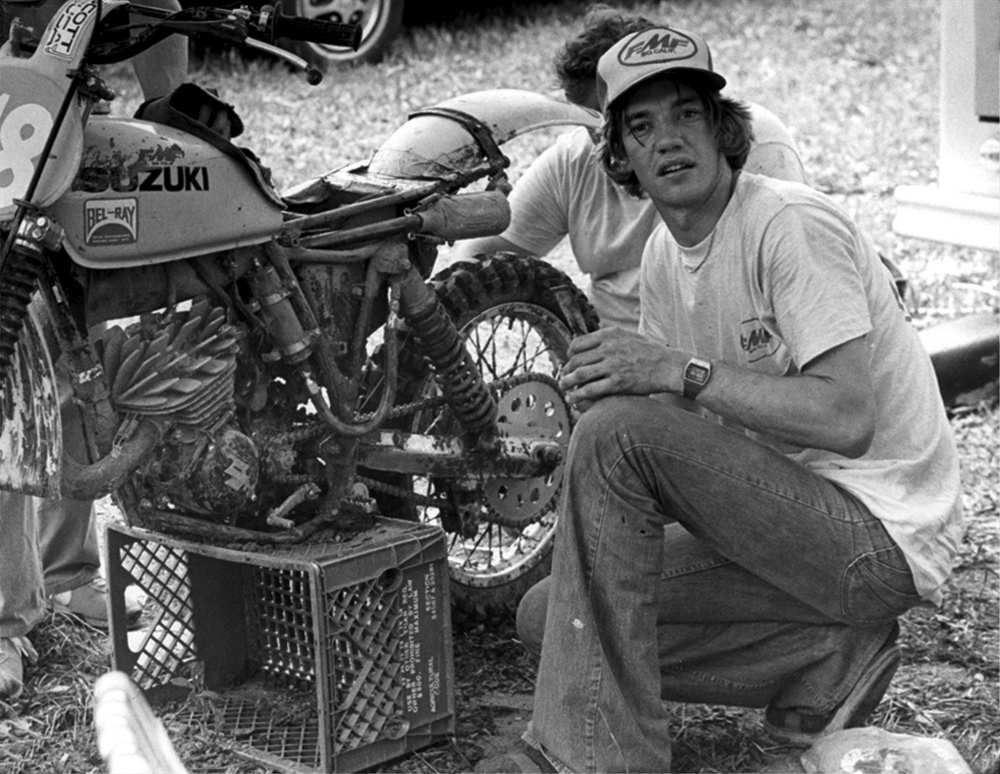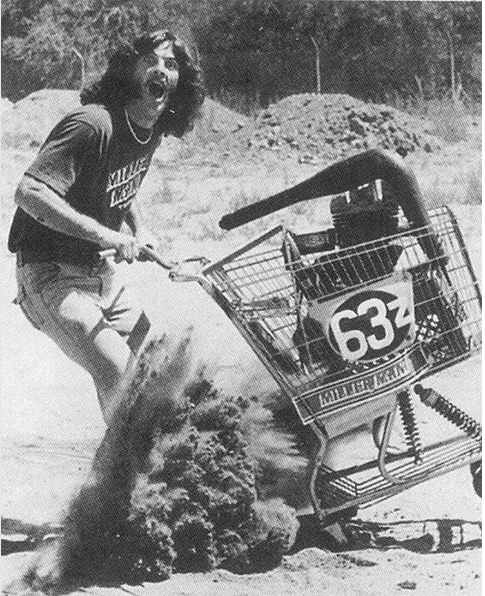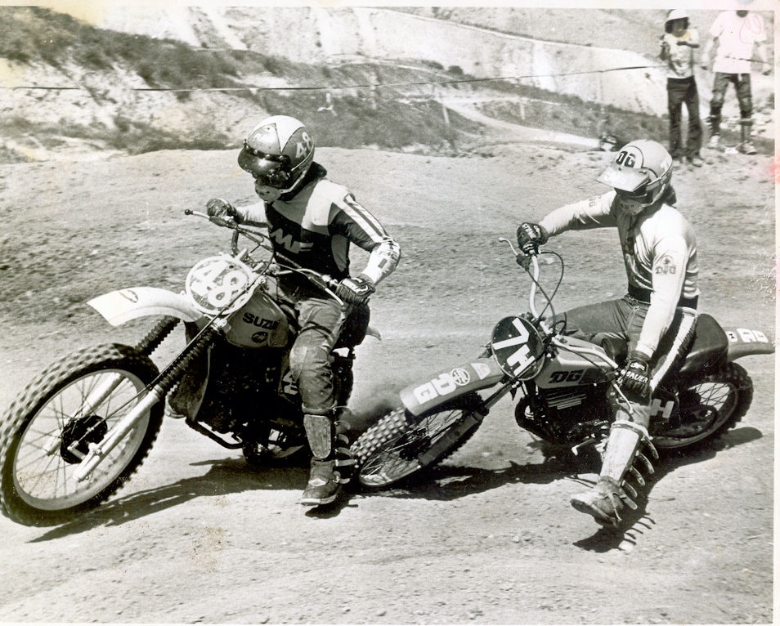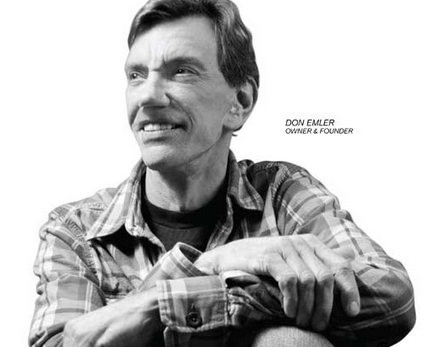While DG may have had the biggest privateer team truck in the 1975 Saddleback pits, by no means did we have the fastest privateer 125 pro race bikes at that time. That did not sit well with me. Having the fastest privateer 125s was my job, and I took that job very seriously. The first part of that job was to identify the key technicians of each of our competitors, and then learn their background, strong points, and weak points. In addition to that, it was important to see DG’s competitors in two different lights. There were the shops we had to race against to net a pro-class win at Saddleback, and then there were the shops that had the manufacturing finesse to be a threat to DG sales. Unfortunately, it was my job to do battle with both: No easy task.

While FMF’s Donnie Emler was certainly the highest-profile 1975 competitor that DG had, he was by no means the only “danger man” at the Saddleback races. The holy grail of a successful MX business (at that time) was to make the best expansion chambers. There was an abundance of very talented pipe builders in Southern California. However the 125 pro class racing was evolving quickly. The competition was becoming so intense that just having the best pipe on your stock bike was not enough to pull off a race win.

By the beginning of the ’76 season I was able to assess all of DG’s racing competition. It was a field of heavy talent. To me, the most talented fabricator and engine tuner of the bunch was Dave Miller of Miller Mano. I marveled at how well crafted his bikes were. They were easily top of the heap. Luckily for me (and DG) Dave’s mindset was much more on custom items than mass production. In addition, Dave’s shop had limited resources, so it was hard for him to staff a telephone sales office, shipping department and the inventory needed to engage in nationwide sales. Some guys are meant to be the big mass merchandisers, and others are meant to be artists. Dave was a mechanical artist that the DG phone sales staff would never have to fret about. The irony: the DG motocross team is long gone, but Dave continues to produce motocross art today. For me, that speaks volumes about the value of creating art.
 Back to FMF, what a tough and worthy competitor it was. Donny Emler himself was a self-taught tuner and pipe builder. His pipes were well crafted, and he was never afraid to scrap an old design in favor of something new that worked better. During those days, both DG and FMF were in a non-stop, new-pipe mode for a CR or YZ 125. Pipe designs changed almost monthly.
Back to FMF, what a tough and worthy competitor it was. Donny Emler himself was a self-taught tuner and pipe builder. His pipes were well crafted, and he was never afraid to scrap an old design in favor of something new that worked better. During those days, both DG and FMF were in a non-stop, new-pipe mode for a CR or YZ 125. Pipe designs changed almost monthly.
Several things made FMF dangerous for DG. First, Donny had a very good business-minded sales-department partner, Tony Rogers. Ironically, Tony would later become the DG sales manager of the early 80’s. Besides FMF’s business strength, Donny also had an organized in-house pipe shop. On top of these qualities, Donny had (what appeared to be) a very close Honda connection via a relationship with Warren Reid and Warren’s Factory-Honda mechanic step-dad “John R” (short for John Rosenthal). It was impossible for me to know what (if any) information sharing there might have been between Donny Emler and John R., but whatever it was, I was very jealous of it because DG had absolutely no Honda Motor Corp connections at all. God knows we tried. I just accepted that I was going to have to fully develop our CR125 team bikes with no help or input from HMC at all. Arrg! I was not a pipe-builder, nor even a welder. The only technical advantage I had over Donny was that all my road racing engine involvement made me a bit more “engine” experienced than him. I had to figure out a way to capitalize on that difference.
Next in the line of dangerous competitors was Tim McCool of T&M Engineering. Tim had some deadly fast CR125s that were being ridden by top-level pro riders. Tim had come from a flat-track racing background where he was a darn good rider, as well as a very competent self-taught tuner. Lucky for me (and DG), Tim was much more focused on the business of mass manufacturing pipes, and less interested in the spectacle of sponsoring 125 pro motocross riders. By 1977, Tim stepped away from the racing scene, and became a mass-production builder of pipes for DG, (under the new name of Cobra Engineering). Tim built thousands of pipes for DG, and today Tim’s Cobra Engineering is one of the biggest pipe building and fabrication companies in the motorcycle industry.
There were others too. The Fox brothers of Fox Racing were very sharp, and had fast team bikes, but being in Northern California, they were not part of the SoCal world I was operating in. The Fox guys were very important because they were well ahead of all the SoCal aftermarket shops in the suspension department. Despite that racetrack advantage, the Fox guys (like DG) were also struggling with the problems of manning their telephone order and tech lines. While I envied the suspension on their team bikes, I knew that their “tech-line” had to be every bit as hellish as mine.
There were also numerous local performance shops and dealership teams like Hacienda Honda, Crown Cycle, Harry’s Cycle, R&D, and others that were active at the races, but these shops tended to focus their sponsorship efforts on the racers wanting to be the “kings” of their local tracks. They were not really a part of the serious 125 “pro wars” at Saddleback. It’s worth noting that in 1975, Mitch Payton was a teenage 125 pro desert racer, and Pro Circuit would not even begin to exist for another five years.
Story Index (Click on any title to read the episode)
Episode 1: Understanding The 70s SoCal Motocross Atmosphere
Episode 2: My Road Into Motocross
Episode 3: Getting a Foot in the Door
Episode 4: Reality in the Race Shop
Episode 5: Building a Race Team
Episode 6: Building the Team Bikes
Episode 7: Understanding the Goals of a Racing Business
Episode 8: The DG Front Office
Episode 9: The Competition
Episode 10: Painting the SoCal Racer’s Atmosphere
Episode 11: From Mechanic to I.T. Before There Was I.T.
Episode 12: A Few Words About Engine “Formulas”
Episode 13: Mechanic Buddies
Episode 14: 1976 Turning Points at DG
Episode 15: Facing the “Race-Gas” Era
Episode 16: The Retail Chamber Birthplace
Episode 17: The Mammoth Motocross Classic
Episode 18: The DG/Saddleback Launching Pad
